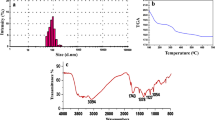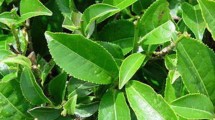Abstract
Globally, the production of zinc oxide nanoparticles (ZnO NPs) increased due to its wide applications including cosmetics, paints etc., and gets accumulated in the environment during their production, use or end-of-life. The toxic effects of the NPs vary with the presence of various surface modification agents. In the current report, toxic effect of bare and capped ZnO NPs with polymeric surface modifying agent including polyvinyl alcohol (PVA), polyethylene glycol (PEG) and polyvinylpyrrolidone (PVP) is studied against adult as well as embryonic zebra fish. The surface capped NPs showed great variation in toxicity levels. It was observed that ZnO-PVA showed highly reduced toxic effects relative to ZnO-PEG and ZnO-PVP. Further, various environmental agents including humic acid can also have an impact on NPs toxicity. ZnO particles showed increased toxic effect in humic acid presence. The uptake of ZnO particles by D. rerio was high in the order of PVP-, PEG- and PVA- followed by bare-ZnO. The current investigation found that ZnO NPs dissolution and uptake are the major factors which cause the toxicity against adult as well as embryonic zebra fishes respectively.






Similar content being viewed by others
Data availability
The datasets generated during and/or analysed during the current study are available from the corresponding author on reasonable request.
References
Akhil, K., Jayakumar, J., Gayathri, G., & Khan, S. S. (2016). Effect of various capping agents on photocatalytic, antibacterial and antibiofilm activities of ZnO nanoparticles. Journal of Photochemistry and Photobiology B: Biology, 160, 32–42.
Akhil, K., & Khan, S. S. (2017). Effect of humic acid on the toxicity of bare and capped ZnO nanoparticles on bacterial, algal and crustacean systems. Journal of Photochemistry and Photobiology B, 167, 136–149.
Aksoy, B., Atakan, N., Aksoy, H. M., Tezel, G. G., Renda, N., Ozkara, H. A., & Onder, E. (2010). Effectiveness of topical zinc oxide application on hypertrophic scar development in rabbits. Burns, 36, 1027–1035.
Anand, K., & Siby, V. (2016). Role of surfactants on the stability of nano-zinc oxide dispersions. Particulate Science and Technology, 35, 67–70.
Asghar, M. S., Qureshi, N. A., Jabeen, F., Khan, M. S., Shakeel, M., & Noureen, A. (2015). Toxicity of zinc nanoparticles in fish: A critical review. Journal of Biodiversity and Environmental Sciences, 7, 431–439.
Bai, W., Zhan, Z., Tian, W., He, X., Ma, Y., Zhao, Y., & Chai, Z. (2010). Toxicity of zinc oxide nanoparticles to zebrafish embryo: A physicochemical study of toxicity mechanism. Journal of Nanoparticle Research, 12, 1645–1654.
Bian, S. W., Mudunkotuwa, I. A., Rupasinghe, T., & Grassian, V. H. (2011). Aggregation and dissolution of 4 nm ZnO nanoparticles in aqueous environments: Influence of pH, ionic strength, size, and adsorption of humic acid. Langmuir, 27, 6059–6068.
Cai, G., Yu, Z., & Tang, D. (2020). Actuating photoelectrochemical sensing sensitivity coupling core-core-shell Fe3O4@C@TiO2 with molecularly imprinted polypyrrole. Talanta, 219, 121341.
Cheng, J. P., Flahaut, E., & Cheng, S. H. (2007). Effect of carbon nanotubes on developing zebrafish (Danio rerio) embryos. Environmental Toxicology and Chemistry, 26, 708–716.
Choi, J. S., Kim, R. O., Yoon, S., & Kim, W. K. (2016) Developmental toxicity of zinc oxide nanoparticles to zebrafish (Danio rerio): A transcriptomic analysis, Plos one, 11, e0160763.
David, C. A., Galceran, J., Castro, C. R., Puy, J., Companys, E., Salvador, J., Monné, J., Wallace, R., & Vakourov, A. (2012). Dissolution kinetics and solubility of ZnO nanoparticles followed by AGNES. The Journal of Physical Chemistry C, 116, 11758–11767.
Evans, D. H., Piermarini, P. M., & Choe, K. P. (2005). The multifunctional fish gill: Dominant site of gas exchange, Osmoregulation, Acid-Base regulation, and excreation of nitrogenous waste. Physiological Reviews, 85, 97–177.
Fiandra, L., Bonfanti, P., Piunno, Y., Nagvenkar, A. P., Perlesthein, I., Gedanken, A., Saibene, M., Colombo, A., & Mantecca, P. (2020) Hazard assessment of polymer-capped CuO and ZnO nanocolloids: A contribution to the safe-by-design implementation of biocidal agents. NanoImpact, 17, 100195.
Girigoswami, K., Viswanathan, M., Murugesan, R., & Girigoswami, A. (2015). Studies on Polymer-Coated Zinc Oxide Nanoparticles: UV-Blocking Efficacy and in Vivo toxicityMaterials Science and Engineering C, 56, 501–510.
Gottschalk, F., Sonderer, T., Scholz, R. W., & Nowack, B. (2009). Modeled environmental concentrations of engineered nanomaterials (TiO2, ZnO, Ag, CNT, Fullerenes) for different regions. Environmental Science & Technology, 43, 9216–9222.
Guo, L., & Yang, S. (2000). Highly monodisperse polymer-capped ZnO nanoparticles: Preparation and optical properties. Applied Physics Letters, 76, 2901.
Gutul, T., Rusu, E., Condur, N., Ursaki, V., Goncearenco, E., & Vlazan, P. (2014). Preparation of poly(N-vinylpyrrolidone)-stabilized ZnO colloid nanoparticles. Beilstein Journal of Nanotechnology, 5, 402–406.
Han, Y., Kim, D., Hwang, G., Lee, B.,Eom, I., Kim,P. J., Tong, M., & Kim, H. (2014). Aggregation and dissolution of ZnO nanoparticles synthesized by different methods: Influence of ionic strength and humic acid. Colloids and Surfaces A, 451, 7–15.
Javed, R., Usman, M., Tabassum, S., & Zia, M. (2016). Effect of capping agents: Structural, optical and biological properties of ZnO nanoparticles. Applied Surface Science, 386, 319–326.
Kovrižnych, J. A., Sotníková, R., Zeljenková, D., Rollerová, E., Szabová, E., & Wimmerová, S. (2013). Acute toxicity of 31 different nanoparticles to zebrafish (Danio rerio) tested in adulthood and in early life stages – Comparative study. Interdisciplinary Toxicology, 6, 67–73.
Kteeba, S. M., El-Adawi, H. I., El-Rayis, O. A., El-Ghobashy, A. E., Schuld, J. L., Svoboda, K. R., & Guo, L. (2017). Zinc oxide nanoparticle toxicity in embryonic zebrafish: Mitigation with different natural organic matter. Environmental Pollution, 230, 1125–1140.
Lin, Y., Zhou, Q., Zeng, Y., & Tang, D. (2018). Liposome-coated mesoporous silica nanoparticles loaded with L-cysteine for photoelectrochemical immunoassay of aflatoxin B1. Microchimica Acta, 185, 311.
Lv, S., Zhang, K., Zhu, L., & Tang, D. (2020). ZIF-8-Assisted NaYF4:Yb, Tm@ZnO converter with exonuclease III-powered DNA walker for near-infrared light responsive biosensor. Analytical Chemistry, 92, 1470–1476.
Ma, H., Wallis, L. K., Diamond, S., Li, S., Carrell, J. C., & Parra, A. (2014). Impact of solar UV radiation on toxicity of ZnO nanoparticles through photocatalytic reactive oxygen species (ROS) generation and photo-induced dissolution. Environmental Pollution, 193, 165–172.
Ma, R., Levard, C., Marinakos, S. M., Cheng, Y., Liu, J., Michel, F. M., Brown, G. E., & Lowry, G. V. (2012). Size-controlled dissolution of organic-coated silver nanoparticles. Environmental Science & Technology, 46, 752–759.
Mirzaei, H., & Darroudi, M. (2017). Zinc oxide nanoparticles: Biological synthesis and biomedical applications. Ceramics International, 43, 907–914.
Nagvenkar, A. P., Deokar, A., Perelshtein, I., & Gedanken, A. (2016). A one-step sonochemical synthesis of stable ZnO–PVA nanocolloid as a potential biocidal agent. Journal of Materials Chemistry B, 4, 2124–2132.
Ong, K. J., Felix, L. C., Boyle, D., Ede, J. D., Ma, G., Veinot, J. G. C., & Goss, G. G. (2017). Humic acid ameliorates nanoparticle-induced developmental toxicity in zebrafish. Environmental Science: Nano, 4, 127–137.
Organisation for Economic Co-operation and Development. (2013). Test No. 210: Fish, early-life stage toxicity test, OECD Guidelines for the Testing of Chemicals, Section 2, Paris, France.
Organisation for Economic Co-operation and Development. (1992). Test No. 203: Fish, acute toxicity test, OECD Guidelines for the Testing of Chemicals, Section 2, Paris, France.
Patel, K., Bharatiya, B., Mukherjee, T., Soni, T., Shukla, A., & Suhagia, B. N. (2017). Role of stabilizing agents in the formation of stable silver nanoparticles in aqueous solution: Characterization and stability study. Journal of Dispersion Science and Technology, 38, 626–631.
Sahu, Y. S. (2016). Nano zinc oxide market by application (paints & coatings, cosmetics, and others) - Global opportunity analysis and industry forecast. Allied Market Research Report, 2014–2022.
Seitz, F., Lüderwald, S., Rosenfeldt, R. R., Schulz, R., & Bundschuh, M. (2014). Aging of TiO2 nanoparticles transiently increases their toxicity to the pelagic microcrustacean Daphnia magna. Plos one, 10, e0126021.
Shu, J., Qiu, Z., Lv, S., Zhang, K., & Tang, D. (2018). Plasmonic enhancement coupling with defect-engineered TiO2–x: A mode for sensitive photoelectrochemical biosensing. Analytical Chemistry, 90, 2425–2429.
Smijs, T. G., & Pavel, S. (2011). Titanium dioxide and zinc oxide nanoparticles in sunscreens: Focus on their safety and effectiveness. Nanotechnology, Science and Applications, 4, 95–112.
Subashkumar, S., & Selvanayagam, M. (2014). First report on: Acute toxicity and gill histopathology of fresh water fish Cyprinuscarpio exposed to Zinc oxide (ZnO) nanoparticles. International Journal of Scientific Research, 4, 1–4.
Sun, T., Gottschalk, F., Hungerbuhler, K., & Nowack, B. (2014). Comprehensive probabilistic modelling of environmental emissions of engineered nanomaterials. Environmental Pollution, 185, 69–76.
Tegenaw, A., Sorial, G. A., Sahle-Demessie, E., & Han, C. (2020). Role of water chemistry on stability, aggregation, and dissolution of uncoated and carbon-coated copper nanoparticles. Environmental Research, 187, 109700.
Xiao, Y., Vijver, M. G., & Peijnenburg, W. J. G. M. (2018). Impact of water chemistry on the behavior and fate of copper nanoparticles. Environmental Pollution, 234, 684–691.
Yang, S. P., Bar-Ilan, O., Peterson, R. E., Heideman, W., Hamers, R. J., & Pedersen, J. A. (2013). Influence of humic acid on titanium dioxide nanoparticle toxicity to developing zebrafish. Environmental Science & Technology, 47, 4718–4725.
Yang, X., Gondikas, A. P., Marinakos, S. M., Auffan, M., Liu, J., Hsu-Kim, H., & Meyer, J. N. (2012). Mechanism of silver nanoparticle toxicity is dependent on dissolved silver and surface coating in Caenorhabditis elegans. Environmental Science & Technology, 46, 1119–1127.
Zhang, W., Bao, S., & Fang, T. (2016). The neglected nano-specific toxicity of ZnO nanoparticles in the yeast Saccharomyces cerevisiae. Scientific Reports, 6, 24839.
Zhou, Q., Lin, Y., Lu, M., & Tang, D. (2017). Bismuth ferrite-based photoactive materials for the photoelectrochemical detection of disease biomarkers coupled with multifunctional mesoporous silica nanoparticles. Journal of Materials Chemistry, 5, 9600–9607.
Zhu, Y., & Zhou, Y. (2008). Preparation of pure ZnO nanoparticles by a simple solid-state reaction method. Applied Physics A, 92, 275–278.
Zhu, Z., Wang, J., Zhang, X., Chang, Y., & Chen, Y. (2009). The impact of ZnO nanoparticle aggregates on the embryonic development of zebrafish (Danio rerio). Nanotechnology, 20, 195103.
Acknowledgements
The authors thank the management of Bannari Amman Institute of Technology, Sathyamangalam, Tamil Nadu, India for providing facility to carry out our work. The authors extend their appreciation to the Researchers Supporting Project number (RSP-2021/15), King Saud University, Riyadh, Saudi Arabia.
Author information
Authors and Affiliations
Corresponding author
Additional information
Publisher's Note
Springer Nature remains neutral with regard to jurisdictional claims in published maps and institutional affiliations.
Supplementary information
Below is the link to the electronic supplementary material.
Rights and permissions
About this article
Cite this article
Kizhakkumpat, A., Syed, A., Elgorban, A.M. et al. The toxicity analysis of PVP, PVA and PEG surface functionalized ZnO nanoparticles on embryonic as well as adult Danio rerio. Environ Monit Assess 193, 824 (2021). https://doi.org/10.1007/s10661-021-09606-w
Received:
Accepted:
Published:
DOI: https://doi.org/10.1007/s10661-021-09606-w




